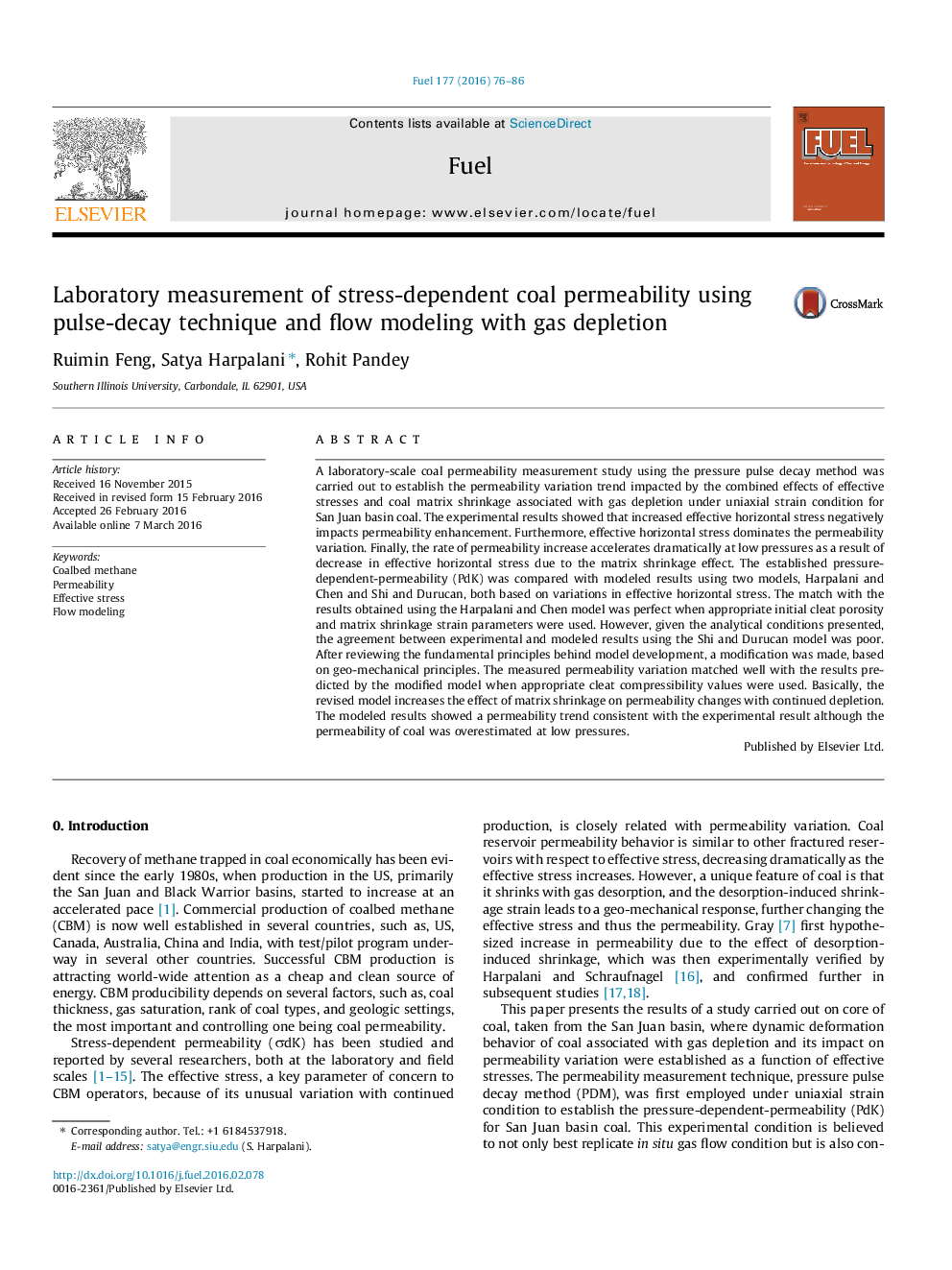| کد مقاله | کد نشریه | سال انتشار | مقاله انگلیسی | نسخه تمام متن |
|---|---|---|---|---|
| 205119 | 461097 | 2016 | 11 صفحه PDF | دانلود رایگان |
A laboratory-scale coal permeability measurement study using the pressure pulse decay method was carried out to establish the permeability variation trend impacted by the combined effects of effective stresses and coal matrix shrinkage associated with gas depletion under uniaxial strain condition for San Juan basin coal. The experimental results showed that increased effective horizontal stress negatively impacts permeability enhancement. Furthermore, effective horizontal stress dominates the permeability variation. Finally, the rate of permeability increase accelerates dramatically at low pressures as a result of decrease in effective horizontal stress due to the matrix shrinkage effect. The established pressure-dependent-permeability (PdK) was compared with modeled results using two models, Harpalani and Chen and Shi and Durucan, both based on variations in effective horizontal stress. The match with the results obtained using the Harpalani and Chen model was perfect when appropriate initial cleat porosity and matrix shrinkage strain parameters were used. However, given the analytical conditions presented, the agreement between experimental and modeled results using the Shi and Durucan model was poor. After reviewing the fundamental principles behind model development, a modification was made, based on geo-mechanical principles. The measured permeability variation matched well with the results predicted by the modified model when appropriate cleat compressibility values were used. Basically, the revised model increases the effect of matrix shrinkage on permeability changes with continued depletion. The modeled results showed a permeability trend consistent with the experimental result although the permeability of coal was overestimated at low pressures.
Journal: Fuel - Volume 177, 1 August 2016, Pages 76–86
